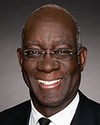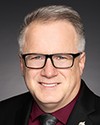Thank you, Mr. Chair.
I would like to thank the committee members for inviting Statistics Canada to appear before them to provide input into their study on the measures the Government of Canada can take to protect and promote French in Canada.
My brief presentation will cover three key points. First, I will talk about different indicators and concepts that are used to track the evolution of French in Canada. Second, I will describe some of the issues and challenges specific to the state of French outside Quebec, as well as in Quebec. Lastly, I will conclude my presentation with a list of other topics requiring more in-depth analysis that needs to factor in the growing complexity of language dynamics and multilingualism in Canada, and particularly in Quebec.
First of all, what do we mean by the state of French in Canada? There are actually a number of indicators and concepts that are used to track its evolution. For example, there are traditional ones that look at the change in the size and proportion of the population with French as its mother tongue, the population with French as the main language used at home, and the population that knows French well enough to have a conversation.
And while statistics on the use of French in the private sphere are very useful and reveal multiple facets of linguistic diversity, language policies, charters and legislation focus on the public sphere. In this vein, it is very important and useful to collect and publish information on the language of work and on language practices in different areas of public life, such as language of instruction, day care centres, cultural activities, public signage, communications with and services offered to communities, to name a few.
Faced with this wide array of indicators, we want to know which one or ones will be considered most important or will best reflect what we call the state and evolution of French. The findings on the status of French could also differ based on whether only one indicator or several non mutually exclusive indicators were used.
Two indicators traditionally used to monitor the evolution of French outside Quebec—mother tongue and first official language spoken—reveal that the French-language population continues to grow in number, but decrease in proportion. The same observation was made for the population that reported being able to have a conversation in French.
Moreover, the population that speaks French predominantly at home is declining in number and proportion, while the population that uses it equally with English or as a secondary language is growing. Similarly, the population that predominantly uses French at work has dropped in number and proportion in favour of the population that uses French and English equally in the workplace.
Of course, it is perilous to speak only to a global analysis without taking into account the great diversity of situations and contexts, depending upon whether one resides in the Atlantic provinces, in Ontario or in the western provinces, in rural areas or in larger urban centres.
In addition, some less frequently used indicators testify to the fact that the picture is not all negative. For example, over the last 10 years for which data are available, the number of enrolments in a French-language minority school has grown by 17% to reach nearly 171,000 students. Likewise, the number of young people who registered in the French immersion program in Canada has increased by nearly 70% since the very first action plan for official languages began in 2003, reaching nearly 478,000 students during the year 2018-19.
However, several studies have documented the fact that the main issue in this area concerns the retention of second language skills and the opportunities to maintain them over time.
Two other considerable issues are hindering the growth of French in Canada outside Quebec. The large-scale study entitled “Language Projections for Canada, 2011 to 2036,” which Statistics Canada published in 2017, shows to what extent major changes in the number of French-language immigrants would be required to stabilize the demographic weight of the francophone population. What's more, incomplete transmission of French from one generation to the next, combined with a low fertility rate and weak status of French in many regions of the country are impeding the growth of the French-language population.
In Quebec, the presence and use of French, and how it has evolved, is complex and multifaceted. For example, census data on mother tongue or main language used at home are generally used to show how French in Quebec has changed. We know that immigration is the main driver of population growth and that the vast majority of these immigrants—more than 7 in 10, in fact—have neither English nor French as their mother tongue. In addition, of the roughly 180,000 new immigrants in the Montreal area at the last census, more than half spoke another language most often at home.
Finally, of the approximately 1.1 million immigrants who were living in Quebec in 2016, 55% reported speaking more than one language at home.
Are these statistics automatically indicative of the decline of French in favour of English in Quebec? Not necessarily, because the reality is much more complex.
For example, in the last census, of the roughly 230,000 workers in the greater Montreal area who spoke a language other than English or French most often at home, close to 46% used French most often at work and another 18% used it equally with English.
As well, between 2006 and 2016, the predominant use of English at work by workers whose mother tongue was English fell by 6 percentage points, and by 7 percentage points among workers in the “other” mother tongue category, in favour of the predominant use of French or equal use of French and English. In contrast, a decrease in the predominant use of French was observed among workers whose mother tongue was French, in favour of equal use of French and English.
According to the Office québécois de la langue française, there was an increase in bilingual greetings by clerks in Montreal stores between 2010 and 2017, but the option for service in French remained stable at 95%.
Finally, of the approximately 6,000 French-mother-tongue McGill University students who graduated between 2010 and 2015, more than 80% reported speaking French most often at home in the last census. These are just some examples of the complexity of language dynamics in Quebec.
Before I conclude, I'd like to say that in addition to the information on French as a mother tongue and as the main language used at home, it is important to delve deeper into a number of dynamics and dimensions on the evolution of the situation of French.
In Quebec, for example, which specific factors account for the increase in English–French bilingualism in the workplace? What is the role of industry sectors involved in commercial trade with the rest of the country or internationally?
A more in-depth analysis of these issues is absolutely necessary, especially considering the growing importance of exports of goods and services from Quebec's high-technology and knowledge industries. In addition, a better understanding is required of the obvious under-representation of populations with an immigrant background in provincial, regional and local public administrations, and in Crown corporations in the greater Montreal area, sectors where the use of French is rather widespread.
There also seems to be an urgent need to better understand the role of language and educational paths, on the one hand, and the language used in the public sphere in Quebec, on the other.
Furthermore, given the increasing complexity of language dynamics and a rise in multilingualism at home in the Montreal area, the traditional indicators of “mother tongue” and “language spoken most often at home,” including a focus on language transfers, need to be revisited and better integrated with other language practice indicators to develop a more complete portrait of the evolution of French in Quebec.
In Canada outside Quebec, some of the topics requiring more comprehensive analysis include the transmission of French to children; the retention of language proficiency among young people whose second language is French; a better understanding of the issues and obstacles that impede the growth, integration and inclusion of highly ethnoculturally diverse francophone immigrants; and a better understanding of the barriers and opportunities of French educational paths from preschool to university.
To conclude, the data to be collected in the 2021 Census of Population this coming May and in the Survey on the Official Language Minority Population in 2022 will be combined with data from other administrative sources and from surveys to build a rich data ecosystem, which will help to enhance our understanding of the complex dynamics of the situation of French in the country.
Thank you for your attention. I would be happy to answer any questions you might have.




